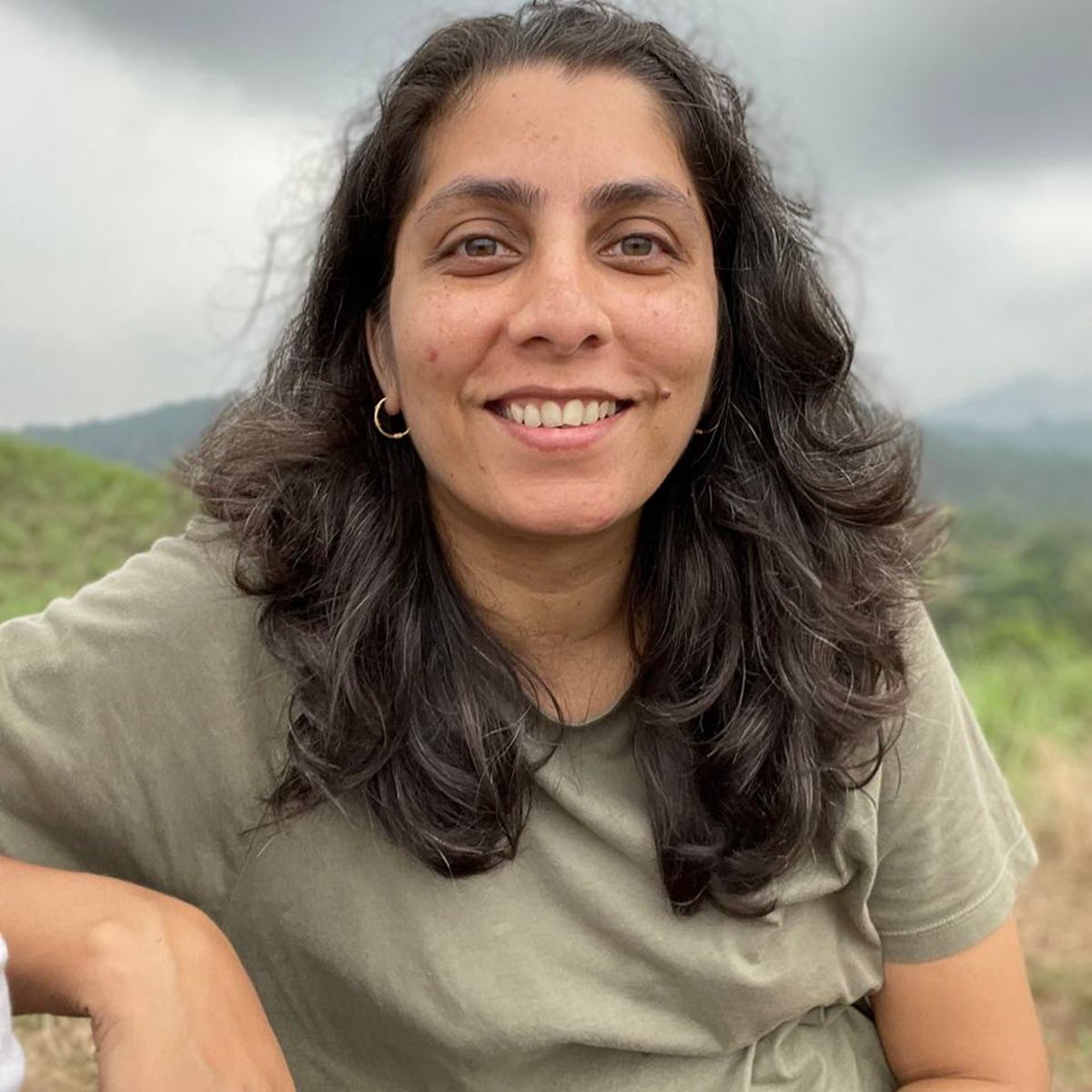Yangdup Lama is India’s most famous bartender. He owns and runs Sidecar in New Delhi (#26 World’s 50 Best Bars 2022, #14 Asia’s 50 Best Bars in 2022, and #1 India’s 30 Best Bars 2022). Under the brand Cocktails & Dreams, he runs Speakeasy in Gurgaon, a bar service and beverage consultancy, and a bartending school. He has authored Cocktails & Dreams: The Ultimate Indian Cocktail Book. He’s been a TEDx speaker, CNBC Young Turks, recognized by Drinks International as the Bar World’s most influential people in the beverage industry, and winner of several awards, including Indian Bartender of the Year 1996 and Asia-Pacific 30 under 30 in 1997. He mentors and consults for several top beverage brands. For us, though, he’s a Darjeeling guy, born and raised in Darjeeling. He has bridged his two worlds in recent years via his tea cocktails. Here, we catch up with him for a chat on Darjeeling, tea, bartending, and what a cocktail named Darjeeling would be like.
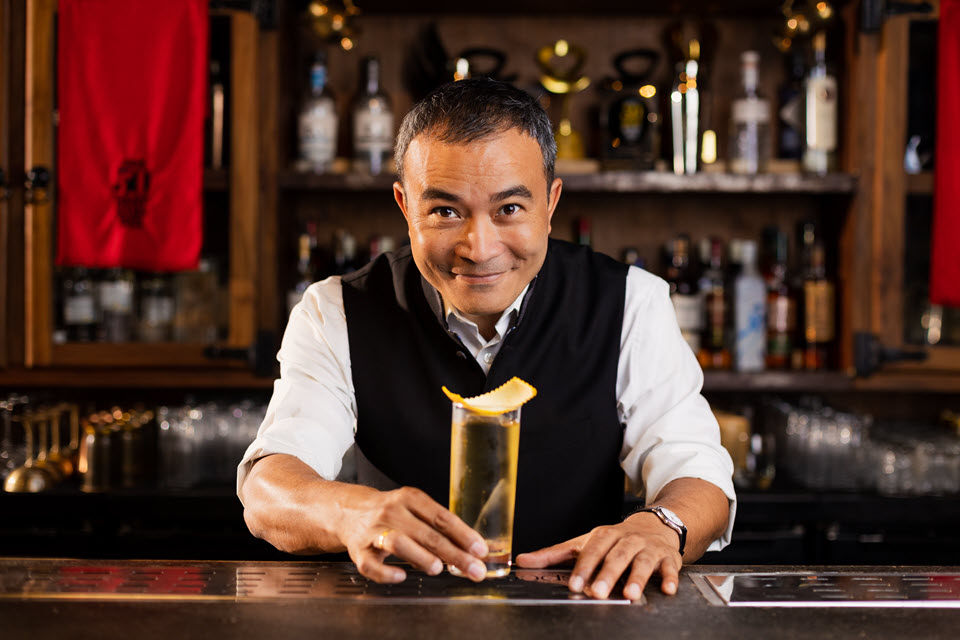
Darjeeling Native a Cocktail Master
By Aravinda Anantharaman
Thank you for joining us at Tea Biz. It’s really nice to have you here. And I really look forward to this conversation with you on Darjeeling, tea, and the whole story of “The Boy from Chai Land Becomes a Cocktail Master.” But first, a quick question for you: first flush or second flush, what’s your favorite Darjeeling?
Yangdup: My favorite is always a second flush. The first is a bit too light for me.
Aravinda: You were born and raised in Darjeeling. Can you tell us what that was like?
Yangdup: So, this was in the eighties. I’m a child of the seventies, and I was in school throughout the eighties until 1989, when I finished school and then went down to the plains for higher studies. I was in a boarding school all through, And if you asked me what life was like, I think it was much simpler. Simplicity was, I think, the key at that moment and all those times. The fact that I come from a small little village within the district of Darjeeling. It’s a village called Gayabari, which is almost midway on the main highway when you go to Darjeeling. So it’s not from the main town of Darjeeling. And the Selim Hill tea estate was just about five feet to 10 feet away from me. So, you know, I’ve seen the estate and the tea gardens from a very young age. I could see the harvesting, but I didn’t understand that time what it was in terms of how many times the tea was harvested…No understanding of tea. But I’ve seen that all happen in front of me as a child. We used to just hang around the tea, play, and run amongst the estate with other kids from the village. So life was much simpler. It was great.
Now I can recollect the taste of tea leaves. While playing, we just plucked a few tea leaves and just bit into them. At that time, it was just like a playful thing to do. But today, when I try to recollect the flavor, it’s so nice because it’s pure green tea, absolutely unfermented. And there used to be these small ? I do not know what it’s called ? it was more like dry seeds, and it used to have a lot of water inside it. So I still remember as a child when you were thirsty, and you couldn’t get hold of water anywhere, you just plucked one of those, broke it in half ? it was nice and cold, and inside there was a jellylike thing, but very watery. And we used to just kind of drink those in small bits. So it was nice. I think it was very simple. It was great… open air, blue sky, simple life.
Aravinda: And then you left, Darjeeling and then you moved, you moved to Delhi. After college or after school?
Yangdup: I actually finished my Plus 2 (High School) from Darjeeling. So, till the 10th, I was in a boarding school in Kurseong, a small little town. And then, after that, I went down to Bagdogra, which is like the foothills of the Darjeeling hills. And that’s, that’s where I did the Plus 2 from the Army School. There’s an Army Base there. And then after that, after my Plus 2, I went down to Calcutta and did my hotel management. And after that, you know, three, four years in Calcutta and then into Delhi.
Aravinda: What did you miss most about home at that time when you first moved to the city?
Yangdup: I think I definitely missed a lot of the simplicity. You know, it was much more innocent. Life was much nicer — people were more gentle. You know, the roughness of the city did take a toll on me initially.
The whole idea was I always wanted to go back. Even when I came to Delhi, my idea was to be here for a few years and then return to Darjeeling. But then things also changed back home. The political situation over there, the fact that there was a lot of instability, and also unemployment was a big thing. It still is.
And I think in the last 20 to 25-odd years, it’s sad to say, but Darjeeling has changed for the worse. I understand all the hill stations are the same, you know, because it used to be much simpler, but now it’s become more commercial. But Darjeeling Hills as a whole, overall, has changed purely because of the political disturbance in the last 35-40 years.
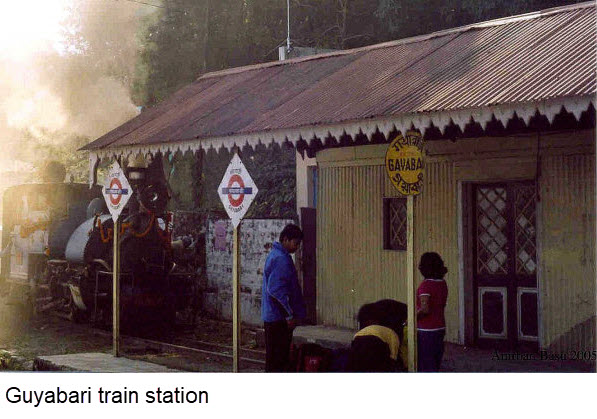
I’m still very connected to my house. I’m rebuilding my ancestral property in that small little village. I visit my village every two or three months even now. I’m under the village Panchayat WhatsApp group. So I know I get all the updates. I very much enjoy participating. I’m very well connected to my village.
I can’t change the whole of the district, but at least in this small little village where I know people, you know, and they respect me, I try and do whatever little I can. I’m still very connected to my house. I’m rebuilding my ancestral property in that small little village. I visit my village every two or three months even now. I’m under the village Panchayat WhatsApp group. So I know I get all the updates. I very much enjoy participating. I’m very well connected to my village. I try to do whatever I can in terms of how I can contribute. I can’t change the whole of the district, but at least in this small little village where I know people, you know, and they respect me, I try and do whatever little I can.
But the simplicity, gentleness, and warmth were the most I missed in the beginning. And I could feel it as a young student, even when I went down to Calcutta. And when I came to Delhi, it was worse.
In the beginning, it was really tough. First and foremost, the gentleness of the language. Back home, when we talk to the elders, we are very respectful in the tone. When we speak to the youngsters or the younger people, it’s very soft, gentle, you know? And then, you know, with friends… There are different ways of addressing people. It’s not like that in Delhi. Everybody just called even a stranger ‘tu.’ It’s something that, we hate to do. I would pick up a lot of fights. I would get very angry when somebody said “tu” to me in the beginning. It took me about two years. And then I got to know also know that they didn’t mean it, you know, it’s the language, the culture. They were nice people. Just the way the language was in terms of how they spoke to each other was one of the most difficult things.
Aravinda: Did you carry your supply of tea with you when you went to Delhi, or was tea sort of a connection to home in any way?
Yangdup: In the beginning, when I came in, it was purely about survival. The idea was to figure out your life and your career. It was not about passion; it was not about interest. You didn’t know what you liked in life. All that you were looking for was a sense of security, right? So I was working very hard. Tea happened to me, I think, six months to one year after I started working.
I joined the Hyatt Regency in Delhi and was at the bar. Of course, back home, my dad used to be very fond of good quality tea. He would always talk about leaf tea. He did not have the technical knowledge. He called it orange pekoe, but he did not know that it was the grading type. For him, orange pekoe was great quality tea, but he meant leaf tea, and it was nice and delicate. As a child, every time we sipped into a cup of tea, you know because dad always spoke about it, you had the flavor in your mouth. So it was very strongly there.
And then later in Calcutta and Delhi, I was drinking CTC, the cooked tea. But I always liked the tea with tea notes rather than the milk. So I like the tea with milk, but not like the way the Delhiites drink – it is less water, more milk, and less tea. I like the tea, which had more tea liquor in it. I was drinking that. And I was working at the bar, Polo Lounge. Interestingly, there was this one packet that came into the Polo Lounge. It was kept in the back. There was, on the menu, Fine Champagne Darjeeling Tea. So this was a tea from an estate known as Ambootia. So, Ambootia Tea Estate is in Kurseong. My school was almost five kilometers above the town, and Ambootia was a few kilometers below the town. So I always knew about Ambootia. And the moment I saw that packet, you feel like, oh, there’s a home for you. That connected. None of the people, including my managers, nobody had any idea ? and I didn’t say to anyone, and that was supposed to be Fine Champagne Darjeeling tea. Basically, it was. I don’t even remember if it was first flush or second flush, but all I remember is that it was good quality leaf tea. It had a premium pricing in the hotel. But since nobody knew about it, nobody would really speak about it. So, the guests never got to experience it.
I was the one who finished the tea over the course of the next year. Because what I would do is every time I would make tea for myself a cup of tea at the bar, I would take a bit of Ambootia tea and put it in my tea. I never spoke about it to anyone, but I still remember it came in a nice ceramic jar— very nice packaging. I’m talking about ’95, ’96, ’97. A cup of tea at the hotel – at that time – the normal price tea would be, the cup would be Rs 150, but this one was priced at almost 300 bucks, so premium pricing. I’m sure it would’ve sold if there was proper tea training, but since it came as a sample probably, you know, more for sampling, nobody knew about it. The purchase didn’t know about it, and the F&B didn’t know about it. And for me, also, I didn’t know the technical aspect. I just knew it was tea from back home, and that it tasted like tea that I used to drink when I was home, So, I finished the tea.
But then inclination was always there, right? And after that, when I kind of settled down in Delhi, I figured out that my palate for tea was very different, I couldn’t just drink the normal CTC. Every time I go home for a holiday, I would always look for the second flush. If I did not get the second flush, then I would buy the first flush. And I had my regular supplies. I knew where to buy my tea. I love the Margarets Hope second flush because it’s closer to home. Every time I went home I would make an effort to drive to the tea room and just buy a couple of kgs of tea and bring it with me, and that was good enough for me for the next, six or seven months. I think about two years after I came to Delhi, I started bringing tea from back home for myself.
Aravinda: You also said you were making tea for yourself at the bar. Did you have like a sort of a routine where, you know, you started your day, or that was a tea break for you? Do you still continue to do that?
Yangdup: Sometimes in the morning, the first tea may be made for me, but if it’s after breakfast, I make it for myself. And I love tea with milk. A lot of people say Darjeeling tea, fine tea; you should not be adding milk. But to me, somehow, I’ve been so used to drinking tea with milk from my childhood years, the moment there’s no milk, I feel there’s poverty. Milk is something I’m very much fond of in my tea. When I am tasting tea, I don’t add milk. But if I’m enjoying a cup of tea, I would prefer it with – not a lot of milk, but some amount of milk.
When I started working in the hotel, I used to drink at least two to three cups of tea during those 7, 8 hours, 10 hours, and 12 hours that I’d spend in the hotel. I would always pick up the fine tea. The good thing was that I was working in a 5-star hotel! So they did have a good collection of tea. And I would always choose the tea that I liked. And while I was at the bar, there was always an inventory for alcohol, so the controllers would come to check on how much alcohol, but nobody really bothered about tea. So, you know, nobody even cared about who was drinking the tea. So it was alright. I think I was quite lucky to be able to drink good quality throughout. But I would always make my cup of tea. I like tea that has been infused for at least three to five minutes, I would always go to the back area, and pour a cup of tea or a pot of tea in the silver pot. And I would come into the front of the bar, make drinks, and whenever I had a little time, I would just rush back and then strain the tea and add some milk, and I would always go back and have my sip all the time.
Aravinda: What was the beverage industry like when you got into bartending? What’s the change you have seen in these years?
Yangdup: Cocktail culture, or let’s say, bar culture, did not really exist. It was purely about if you wanted a good drink and if you wanted to have good quality alcohol, you would have to get into a five-star hotel. Only the five-star hotels had good bars. They were not the best bars, but they were definitely much better bars. There were hardly any bars, any bar outside the hotel. So beverage was very restricted. And, of course, some rich people had their collection of alcohol at home. But it was very restricted there until the early 2000s when things started to open up more restaurants outside of hotels, more bars outside of hotels, and automatically, you know, you could then see better quality bartenders also emerge. It wasn’t a very evolved bar culture at all. It was just basic drinks, you know. Cocktails weren’t popular, and it was just regular drinks. If you made a Bloody Mary, people would look at you, oh, that’s a Bloody Mary. I still remember, you know, most of the hoteliers, even they were not very well versed or well-tuned with the beverages. If you were somebody who knew a little bit more about wines or whiskey, you were looked upon with a lot of respect because you were the most knowledgeable person. It wasn’t a cultural thing. I think it happened much later.
Even coffee was just coffee. Because we were in a hotel, we knew of cappuccino, espresso, and ristretto, but even Americano was not really popular, so coffee was very limited. Nobody really cared about what kind of beans you were using. It was just a standard way of making coffee. And the standard way of making tea.
Aravinda: You’ve also worked on changing the perception of what a bar should be and what a bartender’s role is. You’ve taken it upon yourself to change these perceptions. Why is that?
Yangdup: Yeah, absolutely. Because one is about, you know, I’m at the stage of my career where it’s not about finding security anymore. It’s about continuing to do what you’re good at, what you love doing. That’s very important. In the beginning, it was about finding your space. Now you’ve been able to find that space. You’re very much well settled. You have a good foundation. Apart from that, because I have always enjoyed what I did, I’ve always had a great time being in the beverage space, being in the bar space; I think it’s always nice to, you know, every time I talk to people, it’s always nice to share those moments. And when I share those moments, it’s not just about working in a fancy place; it’s about creating the atmosphere of being in that space or being in that atmosphere, and a lot of the responsibility lies in the hands of the bartender or the drivers of that. We are not just people who fix drinks. We create an atmosphere. So, it does not have to be about making a fancy cocktail all the time. You could just be serving a beer, but you could be this one person who makes all the difference for everybody around you. You are the nerve center of the operations. And that is why I keep talking about it, saying how important it is to make sure that the job profile of a bartender is beyond just cocktails. Cocktail is one of the 100 things that you do. There are 99 other things that you need to be good at. And in order to be good at it, you’ve got to enjoy the moment. You’ve got to enjoy the space, you’ve got to enjoy people, the conversations, and there’s a lot of learning throughout, right? And that’s, that’s how it becomes more interesting for you as well as for the consumer.
I’m sure you would’ve heard of this Long Island Iced Tea cocktail. It’s a very popular drink, and it was very, very popular in the 90s. Very American-driven. Interestingly, it’s called a Long Island Iced Tea, but it has Coke in it, right? And I remember at the Hyatt, it used to be one of those fast-selling cocktails as well. And people drank it not because it was good to taste; people drank it because it provided value for money. Or so they thought. I do not know if it was great value for money, but I remember doing a Long Island Iced Tea with tea in it. I said, Why is it called a Long Island Iced Tea, if there’s Coke in it? Why can’t we just put tea? And if you want to make it sweeter, you can always add sugar. I remember a few guests who loved it with tea, so they used to come back to the Polo Lounge, and every time they ordered the Long Island Iced Tea, I made it with tea in it ? not the finest, but definitely black tea. So that was my first thought about why can’t we do tea? But I never had the opportunity. I wasn’t as mature as a bartender as well. So, for me, it took a little time.
Much later, when I left the hotels, and I was on my own, I started working with brands. I still remember a whiskey company, a whiskey brand, approaching me and saying we would like to take the cocktail route for an activation. And this was a Scotch whiskey brand, a blended scotch whiskey. And they asked about the various ways in which we could do a signature serve. And I remember telling them whiskey with water is very popular. And I told them that tea is flavored water, right? So all we are doing is adding more flavor to the water you’re mixing your whiskey with tea. So why can’t we do whiskey and tea? Once that acceptance was good and it also excited the brand managers, I started exploring tea further. It doesn’t have to be just tea, and we need to define the tea aspect as well. The whiskey has a certain character, a certain flavor. What could be the correct tea to be mixed with that whiskey so that they complement each other and there’s no conflict? Right? So that is where the maturity came in as I started to think more about the varieties of tea that could be used, from green unfermented to semi-fermented to fully fermented black tea, right? So, there were several different styles of tea that could go with different styles of whiskey. And with every experiment and tasting, it only started to get better.
Aravinda: How did it taste? How did whiskey pair with black tea?
It was brilliant. Oh, yes. In a situation where you can choose what you want to eat, is when the taste and the flavor profile rules.
It’s a human tendency. And that is where the whole drinking experience also comes into play. When you have enough in front of you regarding the choice of whiskey. And if you only have water, it’s just one experience. But when you have more than water to mix with, and if you’re open to experimenting, if you’re somebody who is much more evolved, well-traveled, and you are okay to experiment, I think that’s where you find your combination.
So, it does not mean that everybody has to love whiskey and tea. I think some people loved that profile of the drink. It is not always necessary that whiskey has to be with soda. Whiskey can be with water, and it can also be with flavored water and all kinds of flavors, flavored with herbs. Tea is a type of herb. And some of it might appeal to a certain consumer.
Aravinda: Do you have a preference in terms of what tea you’d like to use when you are making a cocktail?
It depends upon what alcohol. If I get alcohol, let’s say it’s a good quality vodka, the vodka is only about alcohol. It does not have its own very strong flavor and character. So, it only lends that alcohol base. One can play around. So that’s where I could probably use tea, which has flowery notes. The ruling flavor or the ruling characteristic for the cocktail becomes the second ingredient, which is not the vodka but probably whatever else that we use. Like vodka and orange juice taste like juice that has been spiked, right? But the flavor of orange still remains. It’s an alcoholic orange juice.
The second important thing is the measure and ratio. It should not be too much of tea. It should not be too much of a spirit. I think the right balance, the right measure, is also important. And I figured out that sometimes, it makes a great tasting drink when it’s in the ratio 1:1, and sometimes it makes a great tasting drink when the ratio is 1:2. So even that ratio will matter a lot, you know?
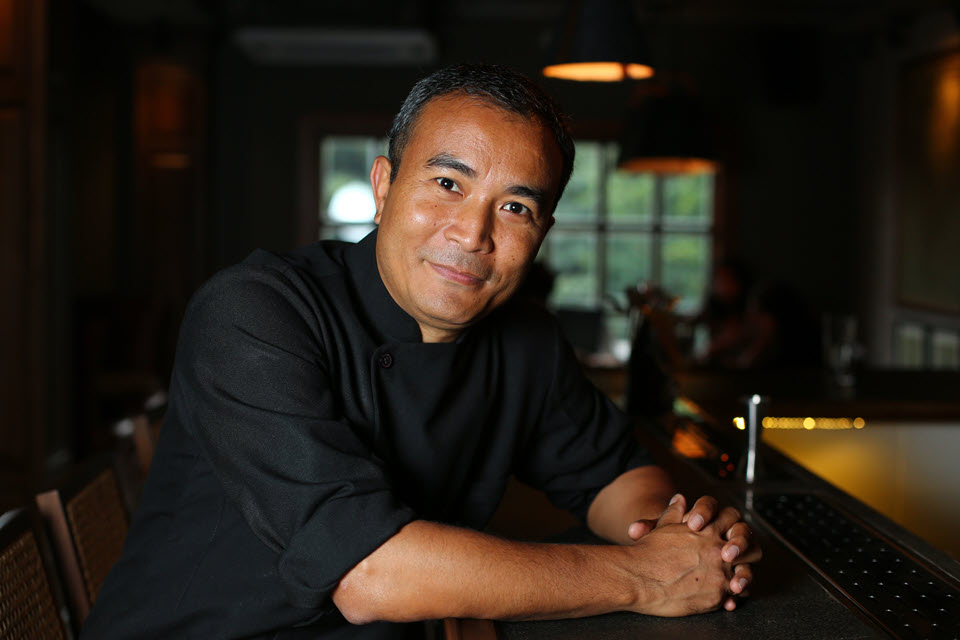
Aravinda: The market is changing, and cocktails are a great way to showcase tea’s versatility. I think sometimes the perception is tea is an old person’s drink. So, how can we take Darjeeling tea and bring it into people’s lifestyles?
I worked in the past with a couple of estates. You know, it was a nice collaboration between us, our bar, and certain estates. And I’ve always spoken to the promoters, always said, you guys as stakeholders of tea business need to come together and then promote tea. I always cite examples of alcohol. Until ten years ago, India was not a country where gin was so popular. People drank more whiskey, and people invested in whiskey. Nobody would buy an expensive gin. Everybody would buy expensive whiskey if they had the money, but you would not buy expensive gin.
Gin was like, Kisi ko peena kai to peelenge. But then it became popular in other parts of the world. And then what also happened is there were gin makers in India, and especially in the last four, five years, what has happened is there at least 15 to 20 new gins that are there in the Indian market made by Indians, but all of them are making and talking about it. I know that only four to five of them will survive and do well. The balance of 15 will fade away. But the fact that all 20 participated in promoting gin and craft gin has helped the category. Similarly, in the tea space, I think what will happen is every stakeholder right from the Tea Board of India to the tea growers, the tea planters, the tea sellers, and the tea marketers, all need to come together and speak about tea and upgrade tea.
The biggest problem with tea ? especially Darjeeling tea ? is it’s very old school, and until and unless you make it cool. Like coffee is cool, you can walk into a cafe, and you’re perceived as the cool guy sitting in the coffee shop working on his laptop and figuring out stuff. So coffee’s always been marketed as the cool thing, whereas tea has always been that sophisticated stuff.
I was in Sri Lanka last week, and I landed at a hotel with and Sri Lankan host. They said, We’ll meet you today at 4 o’clock downstairs in the lobby, and there’s a high tea. I went there, and there was a proper high tea in the lounge. It came with scones, and when we were talking about conversations in alcohol, I said, yeah, tea could be about conversation. It’s like the whole high tea ceremony is almost two hours. You keep on sipping tea, and you have small muffins, sandwiches, and scones with cream. But that is very old school where have a lot of time like, so there are different ways. The culture was very English, right?
The coffee culture came mostly from the fact that you know, Starbucks’ of the world, Costa Coffees’ of the world, made it seem cool. It was an American concept. So it was for the younger lot. You are too stressed out in your office. You take a coffee break, or you can bring your coffee to your desk, and you start working. So it is all about that. But tea has not been perceived that way. Teas always like when you have the time, your mind is relaxed, that is when you drink tea. No, you can still drink when you’re working, right? So it also has to be marketed in that way. And made cool. So you, you need to have these interesting trees. And I think some of them, like Karma Kettle, these guys have been very experimental in tea, and they’ve made tea more approachable.
I think there is a lot of work to be done.
Tea was something that the British brought into India, although the Assam tea always existed. They took all the good quality outside of the country. They marketed elsewhere and made it their culture, but what they gave to the locals was dust and fannings, and that’s why we cook tea because it’s always nice when it’s cooked. And because we always drunk for the last 150 years, we always drank tea of the cheapest quality, we always take it for granted. So, nobody really gives it a thought. But I think as we progress and as consumerism grows within our country, there is a great opportunity for us to talk a little bit more about tea. Stakeholders have to do it. The more we talk, the more we exchange ideas, the more we appreciate the tea genuinely amongst ourselves, and that tea culture will kind of graduate to the next level.
Aravinda: I want to go back to what you were talking about, the craft gin movement and lessons to take away for tea. When you go to Darjeeling, do you feel optimistic about what you see there?
Totally. I think that change is coming in. Most of the traditional tea owners have sold off their estates. Most of the tea estates, especially in the 85 estates, now have changed hands. A lot of them who actually bought over the estate are not tea lovers. They were basically people who were into other businesses. They had a lot of money. They bought their estate purely because they thought it was a great opportunity and it cost them peanuts. But what I see now is a lot of the children who have studied abroad come back and they know that they have a strong financial background support. They’re all business families, but the fact that they’ve abroad, they’ve studied, they’ve travelled the world, and they don’t just do a regular thing. They don’t want to carry on their fathers’ business. They actually do something on their own. I’ve seen a lot of youngsters who’ve taken over their estate from their parents. And bought a lot of newer stuff. From tea tourism to doing more innovative styled teas. And I think that’s a great thing to see. I’m very optimistic that these things will change.
So, if you look at most of the tea bushes in Darjeeling, I think it’s more than 120 years old, it needs replantation. I’m a bartender. The more I love my craft, it will get better. But if I look at it only from a business point of view, I will only look at profit; it does not work, right? So I think it’s the same thing even with tea, you know when people get connected to the whole idea of tea is when they will bring in newer ideas, they’ll bring in more innovation and it’ll improve and I’m sure it’ll do really well. That change is being seen now. It’s gradual, it’s slow, but it’s started to happen.
Take for example, Sri Lankan tea, it’s exactly the same, right? It is much younger than Indian tea, but it has become amongst one of the world’s most popular styles of tea. Like Sri Lankan tea is very sought after. Every time I go to Sri Lanka, I enjoy Sri Lankan tea. It’s very nice.
I still see great potential in Darjeeling tea because the kind of fragrance that you get in Darjeeling tea you don’t get anywhere in the world. So, there’s something unique about this tea. It’s just that you need to realize and understand that you could actually bring in a very unique offering. The reason why it sells is for all of those connoisseurs; they’re ready to pay a very, very high price for it. That’s the biggest advantage. And it needs to be marketed well, and it needs to be propagated in a nice way by all stakeholders, and I’m very confident that it’ll do really well. I think Darjeeling tea does really well outside of India, but I feel it’ll start to do well even within the country. A lot of our own in-house consumers will start to appreciate it.
Aravinda: What would it have if you had to create a cocktail called Darjeeling?
Definitely, it’ll have the second flush. You know, two years ago, we did a collaboration with my bar Sidecar and Makaibari. The owner had come to the bar, and he was very excited when he learned I am from Gayabari and his estate is called Makaibari. It’s across the hill, in Kurseong. So, he invited me over to his estate. I went there, I stayed there, and it was really wonderful, and it gave me a lot of excitement because it was something very local, and I was really, really excited to do this collab. And we made a drink called The Darjeeling Mail. It was blended whiskey. The cocktail was called Darjeeling Mail, named after the very popular train that still plies between ? in the olden days Sealdah and the main Siliguri junction ? now it is NJP to Sealdah, and it’s a night train, and it’s a very popular train which most of us take when you go to Darjeeling. The cocktail is simple: a second flush with a little balance, a touch of bitters, and a blended scotch whiskey. And it was not a very premium blended whiskey. We just picked an entry-level blended whiskey, so you know, on the lines of a Red Label or a Black and White. So it was very approachable, not expensive, but something nice and soothing, and a tall drink. So yeah, if it is, it has to be a signature cocktail; it’ll always start with a second flush because that is something that I enjoy myself the most.
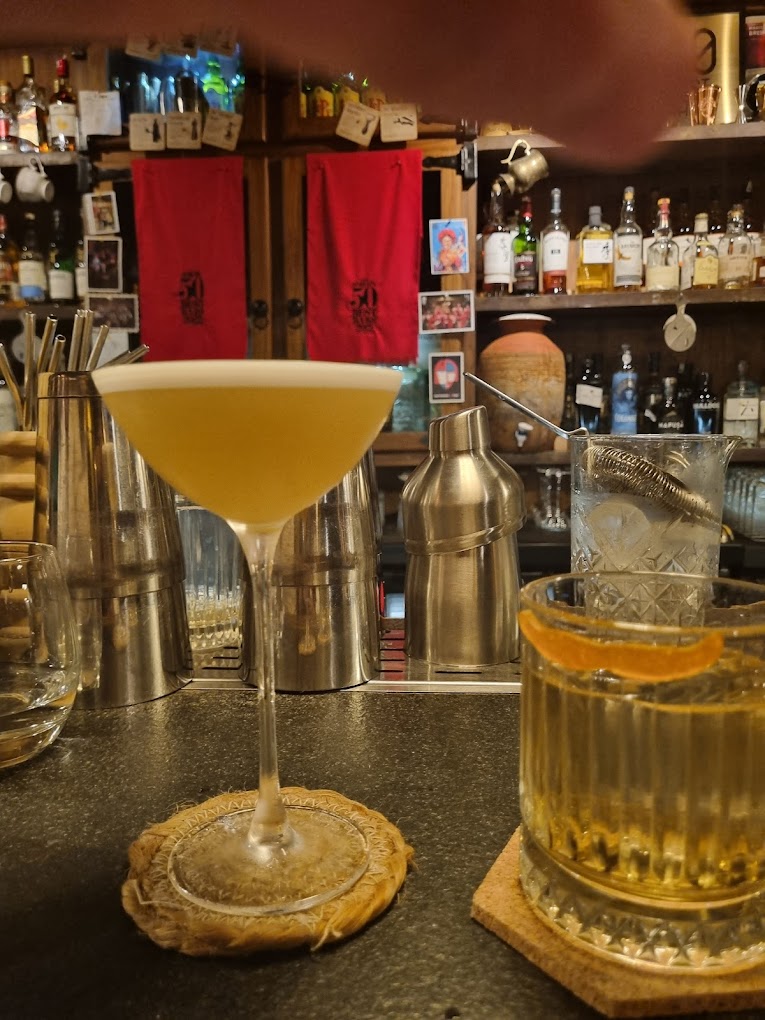
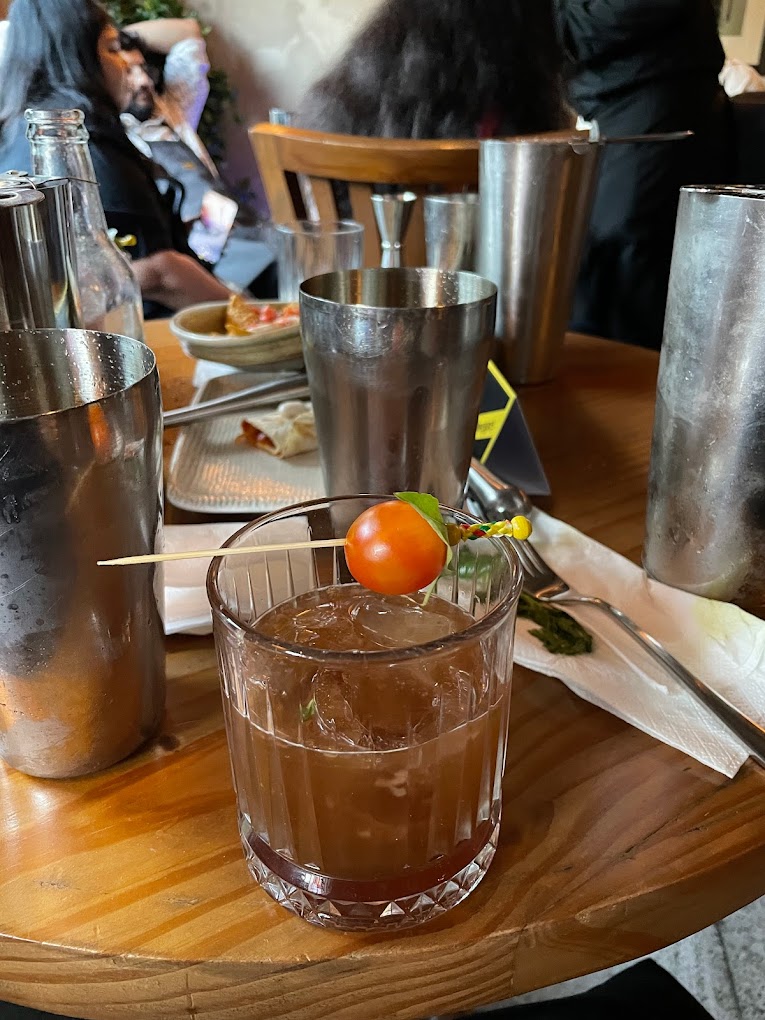
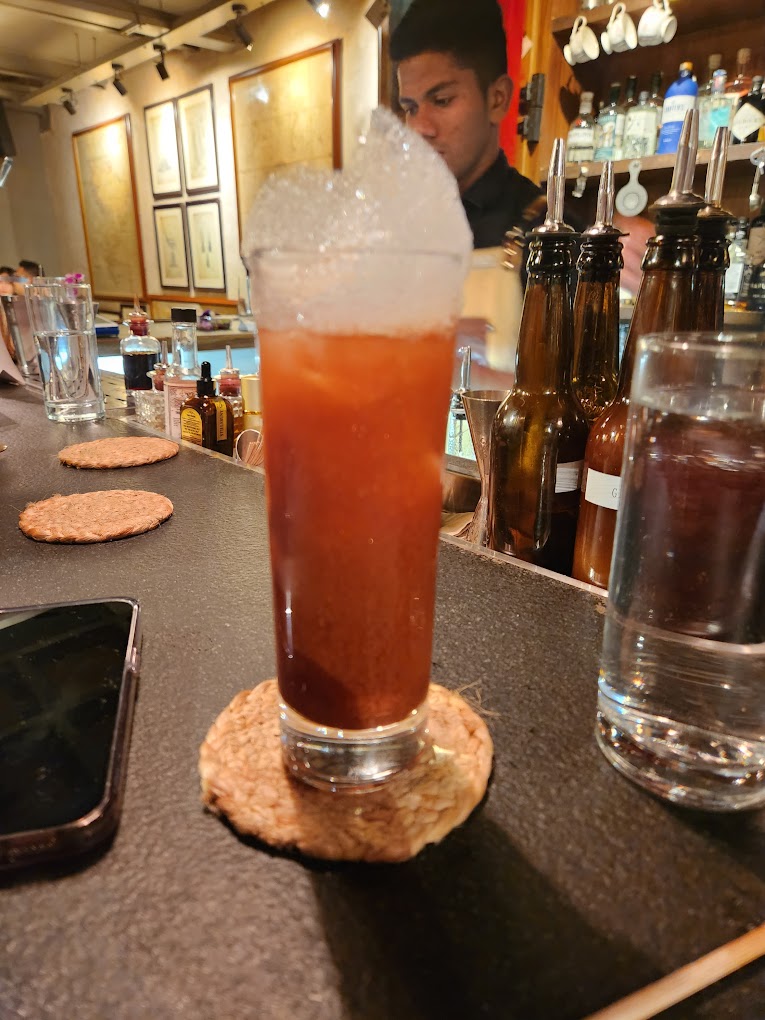
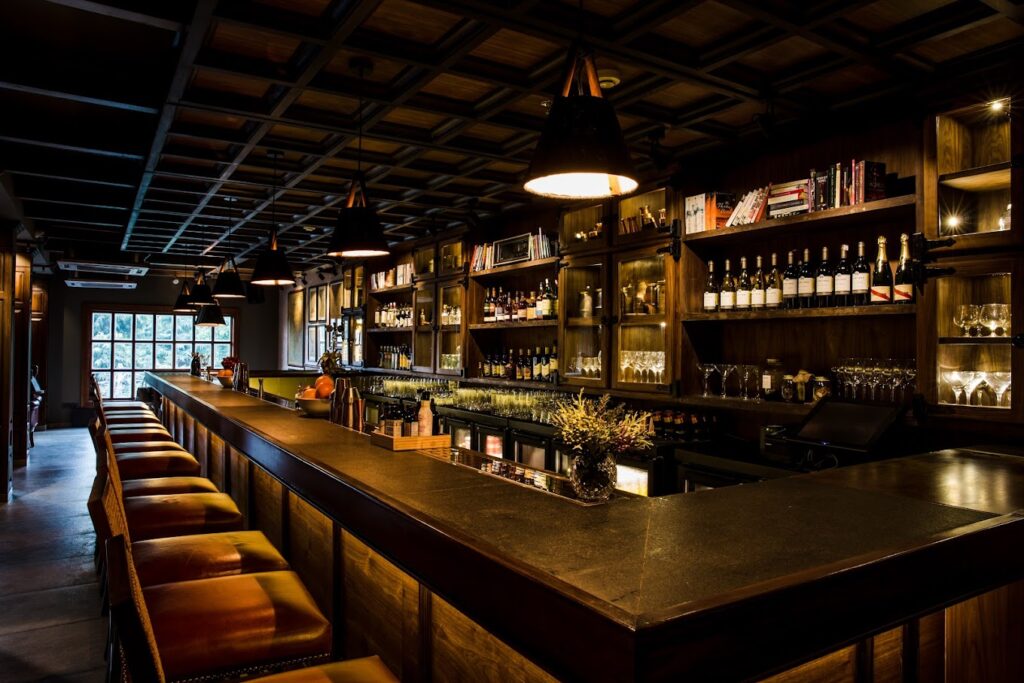
Powered by RedCircle

